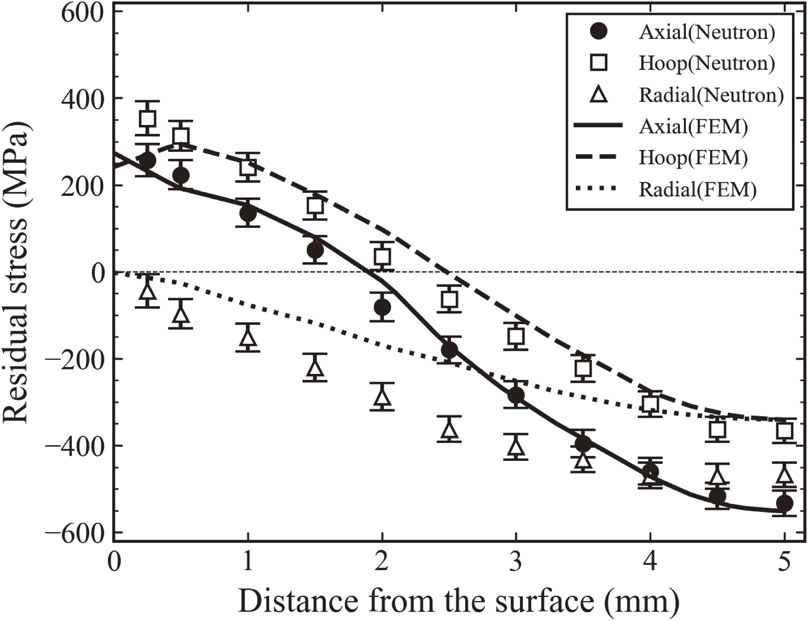- 著者
- A. H. M. Enamul Kabir Masahiko Sekine Tsuyoshi Imai Koichi Yamamoto
- 出版者
- Japan Society on Water Environment
- 雑誌
- Journal of Water and Environment Technology (ISSN:13482165)
- 巻号頁・発行日
- vol.18, no.3, pp.175-194, 2020 (Released:2020-06-10)
- 参考文献数
- 103
- 被引用文献数
- 9
Marine microplastics pollution has been an emerging global threat. This study investigated microplastics pollution in the ‘Seto Inland Sea (SIS)’ and ‘Sea of Japan (SJ)’ surrounded Yamaguchi prefecture areas in Japan. The density separation method was applied to extract microplastics from sea surface sediment and water samples. Polymeric compounds were identified through ATR-FTIR analysis. The average microplastic abundances were 112.57 ± 121.30 items/kg in sediment and 57.46 ± 20.82 items/L in water. Abundance comparisons revealed similar level of pollution in both sea areas and medium to high-level pollution than others around the world. Characterization revealed that fragments and small microplastics (< 1,000 µm) predominated sediments. Fragments and films were major shapes in the SIS sediments while only fragments predominated the SJ sediments. Large microplastics (1,000–5,000 µm) fibers predominated water in all the areas. Transparent microplastics predominated both the sediments and water. Polyethylene, polyvinyl alcohol, and polypropylene were major polymers in sediments while polyethylene terephthalate and polyethylene predominated water. No significant correlations of microplastics abundances and characteristics were observed between sediment and water. Anthropogenic activities and environmental factors were speculated to be the main sources of microplastics in these areas. Overall, this study indicated that microplastics pollution in these marine areas could be an alarming environmental problem.
- 著者
- Satoru Nishida Souichiro Nishino Masahiko Sekine Yuuki Oka Stefanus Harjo Takuro Kawasaki Hiroshi Suzuki Yukio Morii Yoshinobu Ishii
- 出版者
- The Japan Institute of Metals and Materials
- 雑誌
- MATERIALS TRANSACTIONS (ISSN:13459678)
- 巻号頁・発行日
- vol.62, no.5, pp.667-674, 2021-05-01 (Released:2021-04-25)
- 参考文献数
- 19
- 被引用文献数
- 5
In this study, we used neutron diffraction to analyze in a non-destructive method the distribution of internal residual stress in a free-cutting steel bar processed by cold drawing and straightening. Since a change in lattice-plane spacing occurs in a strain-free standard sample used as a reference due to the cold-drawing and straightening processes, it was necessary for the sake of improving measurement accuracy to prepare strain-free standard samples for each individual process. As a result, the residual stresses were successfully measured with excellent stress balance. The residual stresses generated by the cold-drawing process were reduced by subsequent straightening, and the distribution of residual stresses by finite element method (FEM) simulation was consistent with the measured values by neutron diffraction. As a result of the FEM analysis, it is assumed that the rod was subjected to strong tensile strains in the axial direction during the drawing process, and the residual stresses were generated when the rod was unloaded. Those residual stresses were presumably reduced by the redistribution of residual stresses in the subsequent straightening process.
- 著者
- Rina FEBRINA Masahiko SEKINE Hiroshi KANEMOTO Koichi YAMAMOTO Ariyo KANNO Takaya HIGUCHI Tsuyoshi IMAI
- 出版者
- Japan Society on Water Environment
- 雑誌
- Journal of Water and Environment Technology (ISSN:13482165)
- 巻号頁・発行日
- vol.13, no.1, pp.77-87, 2015 (Released:2015-02-10)
- 参考文献数
- 9
- 被引用文献数
- 1 1
A stone-embedded fish passage (SEF) allows fish to pass a barrier by reducing the velocity in the slope. The efficiency of SEFs has however not been evaluated well and the design parameters are not clear. The efficiency of SEFs for fish therefore needs to be evaluated and analyzed. In this research, we attempted to develop a simple equation to estimate the passability of an SEF for Ayu (Plecoglossus altivelis), which is applicable in the SEF's designing stage. We reproduced the SEF conditions experimentally. The set-up consisted of a pool and a channel, and evaluated its passability based on physical conditions such as air bubbles, velocity, and depth. With the results, we developed a decision tree to explain the passability using design variables such as discharge, channel slope, and pool size and depth. Then, to estimate the whole SEF, we proposed an equation which calculated the average of the decision tree outputs throughout the SEF's whole ascending routes. Lastly, we verified the equation through field experiments. The equation showed good agreement with the observed fish ascent success rate. This technique could therefore be used to evaluate a SEF in its designing stage.
